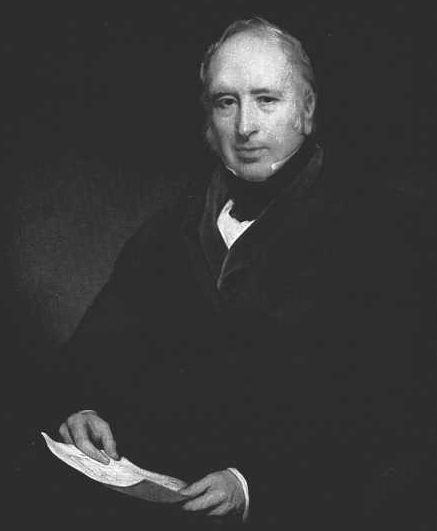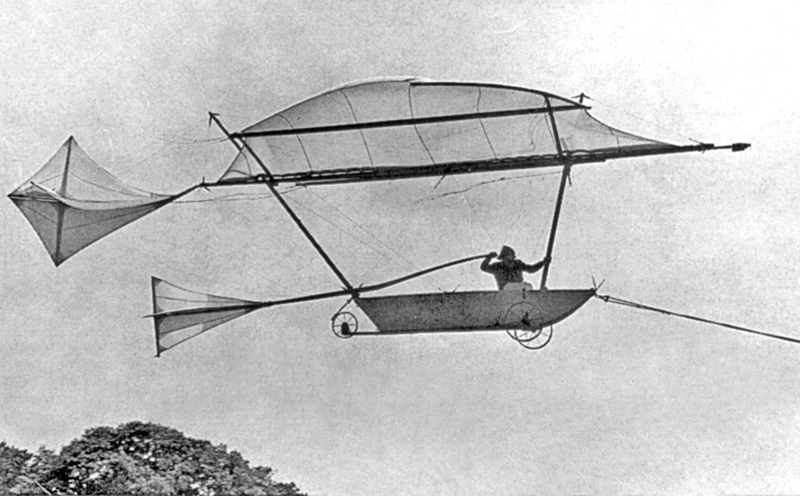<Back to Index>
- Aeronautics Pioneer George Cayley, 1773
- Composer William Marshall, 1748
- Commander of the Luftwaffe Battle Wing 200 Werner Baumbach, 1916
PAGE SPONSOR


Sir George Cayley, 6th Baronet (27 December 1773 – 15 December 1857) was a prolific English engineer and one of the most important people in the history of aeronautics. Many consider him the first true scientific aerial investigator and the first person to understand the underlying principles and forces of flight. Sometimes called the "Father of Aviation", in 1799 he set forth the concept of the modern aeroplane as a fixed - wing flying machine with separate systems for lift, propulsion, and control. Often known as "the father of Aerodynamics", he was a pioneer of aeronautical engineering. Designer of the first successful glider to carry a human being aloft, he discovered and identified the four aerodynamic forces of flight — weight, lift,drag, and thrust — which are in effect on any flying vehicle. Modern aeroplane design is based on those discoveries including cambered wings. He is credited with the first major breakthrough in heavier - than - air flight and he worked over half a century before the development of powered flight, being acknowledged by the Wright brothers. He designed the first actual model of an aeroplane and also diagrammed the elements of vertical flight.
Cayley served for the Whig party as Member of Parliament for Scarborough from 1832 to 1835, and helped found the Royal Polytechnic Institution (now University of Westminster), serving as its chairman for many years. He was a founding member of the British Association for the Advancement of Science and was a distant cousin of the mathematician Arthur Cayley.
Cayley, from Brompton - by - Sawdon, near Scarborough in Yorkshire, inherited Brompton Hall and its estates on the death of his father, the 5th baronet. Captured by the optimism of the times, he engaged in a wide variety of engineering projects. Among the many things that he developed are self - righting lifeboats, tension - spoke wheels, the "Universal Railway" (his term for caterpillar tractors), automatic signals for railway crossings, seat belts, small scale helicopters, and a kind of prototypical internal combustion engine fuelled by gunpowder. He also contributed in the fields of prosthetics, air engines, electricity, theatre architecture, ballistics, optics and land reclamation, and held the belief that these advancements should be freely available.
He is mainly remembered, however, for his pioneering studies and experiments with flying machines, including the working, piloted glider that he designed and built. He wrote a landmark three part treatise titled "On Aerial Navigation" (1809 – 1810), which was published in Nicholson's Journal of Natural Philosophy, Chemistry and the Arts. The recent (2007) discovery of cartoons in Cayley's school notebooks (held in the archive of the Royal Aeronautical Society Library in London, England) reveal that even at school Cayley was developing his ideas on the theories of flight. It has been claimed that these images indicate that Cayley modeled the principles of a lift - generating inclined plane as early as 1792. To measure the drag on objects at different speeds and angles of attack, he later built a "whirling - arm apparatus" — a development of earlier work in ballistics and air resistance. He also experimented with rotating wing sections of various forms in the stairwells at Brompton Hall. These scientific experiments led him to develop an efficient cambered airfoil and to identify the four vector forces that influence an aircraft: thrust, lift, drag, and gravity. He discovered the importance of the dihedral angle for lateral stability in flight, and deliberately set the centre of gravity of many of his models well below the wings for this reason; these mechanics influenced the development of hang gliders. As a result of his investigations into many other theoretical aspects of flight, many now acknowledge him as the first aeronautical engineer. His emphasis on lightness led him to shift the forces in the landing gear wheel from compression to tension by using string as wires, in effect re-inventing the wheel. This wire wheel principle was (and is) later used by others for bicycles, cars and many other vehicles.
By 1804 his model gliders appeared similar to modern aircraft: a pair of large monoplane wings towards the front, with a smaller tailplane at the back comprising horizontal stabilisers and a vertical fin. Around 1843, he was the first to suggest the idea for a convertiplane, an idea which was published in a paper written that same year. During some point prior to 1849 he designed and built a biplane powered with "flappers" in which an unknown ten year old boy flew. Later, with the continued assistance of his grandson George John Cayley and his resident engineer Thomas Vick, he developed a larger scale glider (also probably fitted with "flappers") which flew across Brompton Dale in 1853. The first adult aviator has been claimed to be either Cayley's coachman, footman or butler: one source (Gibbs - Smith) has suggested that it was John Appleby, a Cayley employee — however there is no definitive evidence to fully identify the pilot. An obscure entry in volume IX of the 8th Encyclopædia Britannica of 1855 is the most contemporaneous account with any authority regarding the event. A 2007 biography of Cayley (Richard Dee's The Man Who Discovered Flight: George Cayley and the First Airplane) claims the first pilot was Cayley's grandson George John Cayley (1826 – 1878). Dee's book also reports the re-discovery of a series of doodles from Cayley's school exercise book which suggest that Cayley's first designs concerning a lift generating inclined plane may have been made as early as 1793.
A replica of the 1853 machine was flown at the original site in Brompton Dale by Derek Piggott in 1973 for TV and in the mid 1980s for the IMAX film On the Wing. The glider is currently on display at the Yorkshire Air Museum. Another replica, piloted by Allan McWhirter, flew in Salina, Kansas, just before Steve Fossett landed the Virgin Atlantic Global Flyer there again in March 2003, and later piloted by Richard Branson at Brompton in summer 2003.
Cayley is commemorated in Scarborough at the University of Hull, Scarborough Campus, where a hall of residence and a teaching building are named after him. He is one of many scientists and engineers commemorated by having a hall of residence and a bar at Loughborough University named after him. There are display boards and a video film at the Royal Air Force Museum London in Hendon, honouring Cayley's achievements.